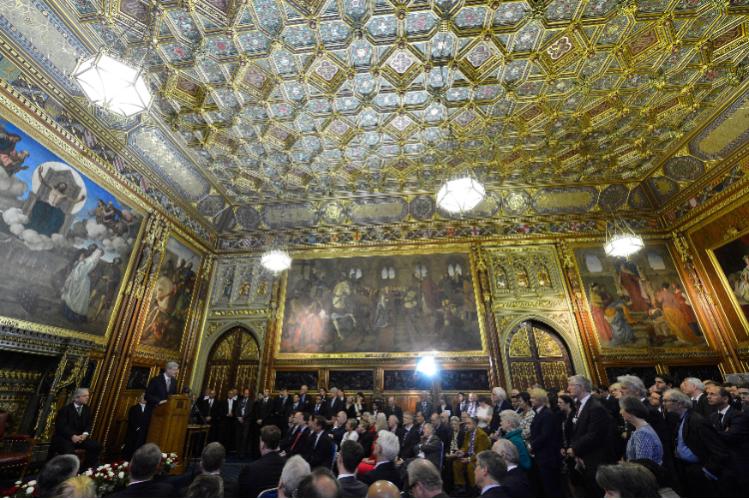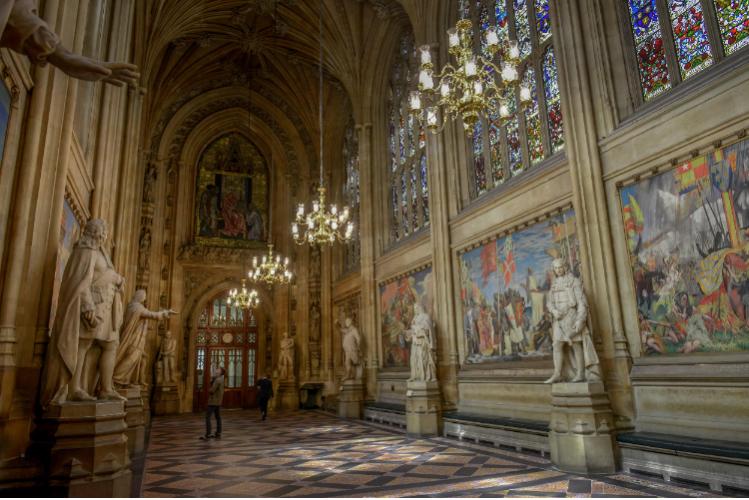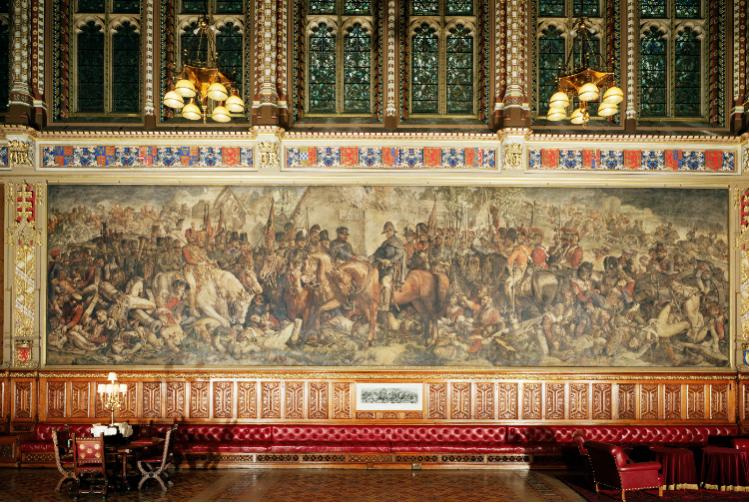Inside Westminster's history of contested monuments
Statue of Oliver Cromwell, outside Parliament (Alamy)
4 min read
Oliver Cromwell as a regicide was originally absent from the line of statues of former rulers within the Palace. Walking around Parliament should remind us that arguments about our country’s history have a long history themselves.
Political arguments over statues and memorials are nothing new. MPs and peers walk to and from the Central Lobby along corridors that show their predecessors’ inability to agree on how to represent English history three centuries ago. Bitter arguments over the erection of the statue of Oliver Cromwell outside Westminster Hall contributed to the collapse of the Liberal Government in 1895.
 The Robing Room (Alamy)
The Robing Room (Alamy)
The decoration of the rebuilt Palace of Westminster from the 1840s onwards was intended to provide an uplifting and authoritative version of English history. It was guided by the Royal Fine Arts Commission, chaired by the young Prince Albert and including the Prime Minister, the leader of the opposition, the Lord Chancellor, leading members of both Houses and parties and eminent historians.
The Commission agreed that the Robing Room should focus on King Arthur and the round table, but on other matters the replacement of one Commissioner by another as Prime Minister in 1846 (Sir Robert Peel giving way to Lord Russell) led to what the press described as an “iconographical crisis”. Albert’s emphasis on the monarchy through the ages was modified, as Tory government gave way to Whig, to strengthen images of limited government and parliamentary initiative.
The corridors approaching the Central Lobby carry alternative versions of the conflicts between Stuart monarchy and Parliament on opposite sides: King Charles raising his standard versus the trained bands marching out of London; puritans preparing to leave the country versus Oxford fellows being expelled by New Model Army soldiers.
The vast pictures of the battles of Waterloo and Trafalgar in the Royal Gallery also convey images that disappeared from “England’s story” in the century that followed. Waterloo is presented as a joint British-Prussian victory, with the Duke of Wellington shaking hands with Field Marshal Blucher on the battlefield. The dying Admiral Horatio Nelson is surrounded by black as well as white sailors, with women also on board HMS Victory. St Stephen’s Hall (Alamy)
St Stephen’s Hall (Alamy)
St Stephen’s Hall was decorated last. Its murals include a depiction of the respectful first envoy to the Mughal emperor rather than the conquest of India. The portrayal of “English people in spite of many persecutions” reading Wycliffe’s Bible conveys an anti-Catholic message now written out of our history. “Queen Elizabeth commissions Raleigh to sail for America” slides past her licencing of piracy against the Spanish, and the wealth from tobacco, sugar and slavery that followed.
Cromwell as a regicide was originally absent from the line of statues of former rulers within the Palace. A hero to non-conformists, his reputation partly rescued by Thomas Carlyle’s writings, Lord Rosebery’s Liberal government in 1894 to 1895 proposed to erect a statue outside Parliament to mark the tercentenary of his birth, at the government’s expense.
Prince Albert’s emphasis on the monarchy through the ages was modified to strengthen images of limited government and parliamentary initiative
Outraged Irish nationalists, with support from Conservatives, divided the Commons to strike out the money offered from the estimates – Irish nationalist Willie Redmond declaring that it was “incomprehensible that a Radical Government” should want to put up a statue to “a canting, hypocritical murderer”.
Rosebery’s government fell shortly after this defeat. But Cromwell’s statue was nevertheless erected, outside Westminster Hall, under Lord Salisbury’s Conservative Government, with an anonymous donor providing the funds. It was unveiled by workmen, without ceremony, early on the morning before a meeting of supporters of the statue at Queens’ Hall. Rosebery, universally believed to be the anonymous donor, spoke to those attending of Cromwell’s “immortal memory.”

The Royal Gallery (Alamy)
Monarchs and commoners had differed over interpretations of England’s history long before the old Parliament burnt down. William Shakespeare’s (and Raphael Holinshed’s) pro-Tudor interpretations of history satisfied Queen Elizabeth I. But James I disapproved the interpretation of Anglo-Saxon England that the College of Antiquaries was promoting, and dissolved the college.
Walking around Parliament should remind us that arguments about our country’s history have a long history themselves.
Lord Wallace of Saltaire is a Liberal Democrat peer.
